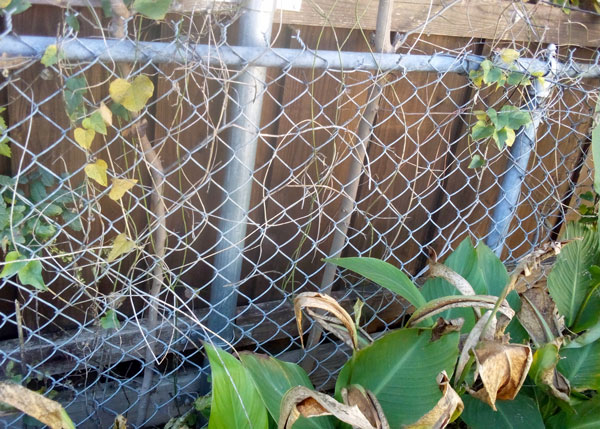Q&A – Ask Neil: January 23, 2025
(Please read these instructions carefully.)
Before you post your question, please look at recent issues to see if someone else has already asked it. You might find your answer there.
How to submit your question…
(Note: You may need to allow a pop-up window to come up in order to get the link for sending your photo(s). If you have already submitted your question and didn’t see the pop-up window, please click here.)
• Click the link provided below to post your question. After you submit your question, a new window will pop up giving you the address to which you can e-mail a SHARP, HIGH-RESOLUTION PHOTO to accompany your question. Please DO NOT SEND THUMBNAIL PHOTOS in case I need to zoom in to see things.
• Click here to post your question.
• Please ONLY POST YOUR QUESTION ONE TIME. We can only accept a set number of questions each week, and when we get duplicates it costs other people their chances.
• One question per reader, please.
• Please use this only for posting questions – not for standard emails.
• Watch for your answer in the following week’s e-gardens.
• I choose those of greatest general interest. For example, plant IDs seldom make the cut.
• I must have your first name or initials.
• I must have your city or county. (Texas is a very large state.)
QUESTION 1
HOW CAN I ELIMINATE TREES BETWEEN MY CHAIN LINK FENCE AND MY NEIGHBOR’S WOOD FENCE?
Question: A couple of years ago my neighbor put up a wooden fence 6-8 in. away from my chain link fence. I’ve sprayed the weeds that have come up between the two fences, but how can I get rid of the volunteer trees? Libby B., Irving.
Answer: You could reach through the links with lopping shears and cut the trunks off at 1 in. above soil line. Use a thin-bladed pruning saw to pulverize the “stumps” and then rig up a method of soaking the stumps (but not the soil) with a broadleafed weedkiller (containing 2,4-D) at full strength. It would soak into the wood and keep sprouts from developing. Get rid of all the other vining debris so you can spray the same broadleafed weedkiller at the proper dilution onto young weeds as they start to develop this growing season. You really need to get the cannas out of the way first, however, so you will have a clear shot at the area you’re spraying. I might even use a square-bladed shovel to remove enough soil from beneath the chain link that I could slide the shovel into the area each year to sever the tree seedlings as they tried to develop. You might also be able to put a weed-blocking landscape fabric neatly in place to stop further growth into the future. It will be 50 times easier to prevent it than to deal with it later.
QUESTION 2
IS THE SILICA IN MEDICAL BOTTLES GOOD/BAD/OTHERWISE FOR OUR GARDEN SOIL?
Question: Is the silica in packets that come in medicine bottles good or bad for our soil? G.K.R., Shady Shores, Denton County.
Answer: All the references I found online said that it is of no harm to people or pets. None addressed its impact on plants. Forgive the way this question will sound, but why would you want to use it anyway? It offers nothing of importance. Why take a chance?
QUESTION 3
WILL THE DRYNESS IN OUR AREA KILL HOLLY SEEDLINGS?
Question: I feel that dryness in our area of southeast/central Oklahoma, and because of our forested situation, holly seedlings spread by birds probably won’t survive here. Yaupon hollies almost became invasive before. Is that a correct assumption? Glenn C., Pushmataha County, Oklahoma.
Answer: I’ve re-read your statement several times to figure out what I’m agreeing to. So, you’re near Antlers, Oklahoma. That’s far enough east that yaupon hollies could germinate and become established, but I would not expect them to become invasive. You’re pretty far north for that to happen. Most other hollies do not germinate freely, possumhaw holly (Ilex decidua) being the notable exception. It’s native throughout the eastern halves of Texas and Oklahoma. Many varieties of hollies are well adapted to your area, but none should become invasive. I hope I answered the question.
QUESTION 4
DO THESE WHITE SPOTS ON THE BARK SUGGEST ANY KIND OF PROBLEM?
Question: Do these white spots on the bark of my trees signify any kind of problem? I saw them first on my redbud, but now they’re on my yaupon holly (?) or live oak. Susan P., Denton.
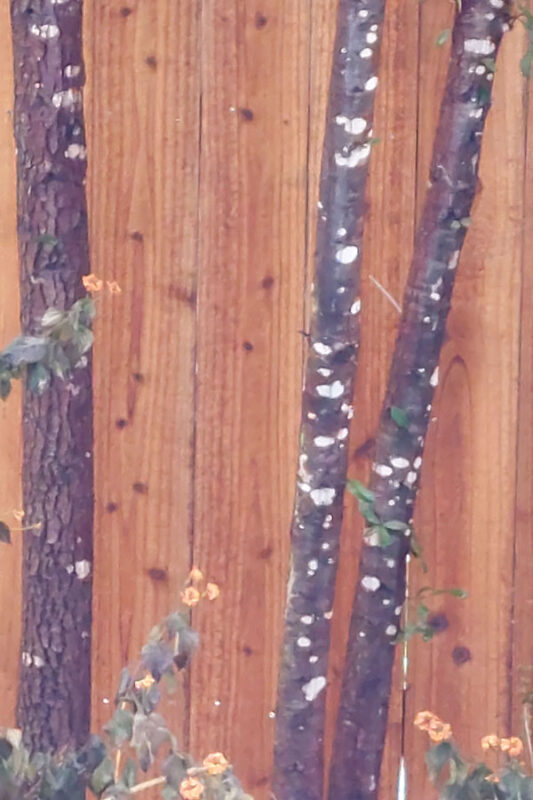
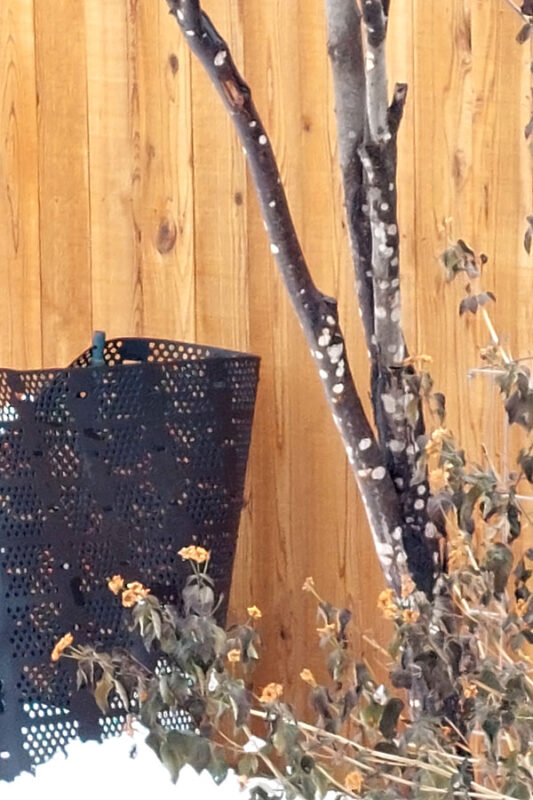
Answer: I don’t believe it’s any kind of a problem. I think you’re probably seeing the development of lichens. They’re the moss-like growths that develop on trunks, limbs, even boulders. They’re symbiotic colonies of algae and funguses feeding one another. Frankly, I can’t see the spots well enough to be sure. It almost looks like I’m seeing some of it on the frozen lantana beneath the one tree. I don’t think it’s bird droppings, but lichens wouldn’t form on the lantanas, so I’m a bit conflicted. Either way, I don’t see it as any kind of problem to those three unrelated species.
QUESTION 5
DO I NEED TO PRUNE THE TOP OF MY SHANTUNG MAPLE TO DEFINE A DOMINANT LEADER?
Question: Do I need to prune the top of my Shantung maple to define a dominant leader? If so, would I cut back the prior central leader as well as the weaker of the two emerging leaders? It was planted two years ago and is now 8-10 ft. tall. Kyle B., Austin.
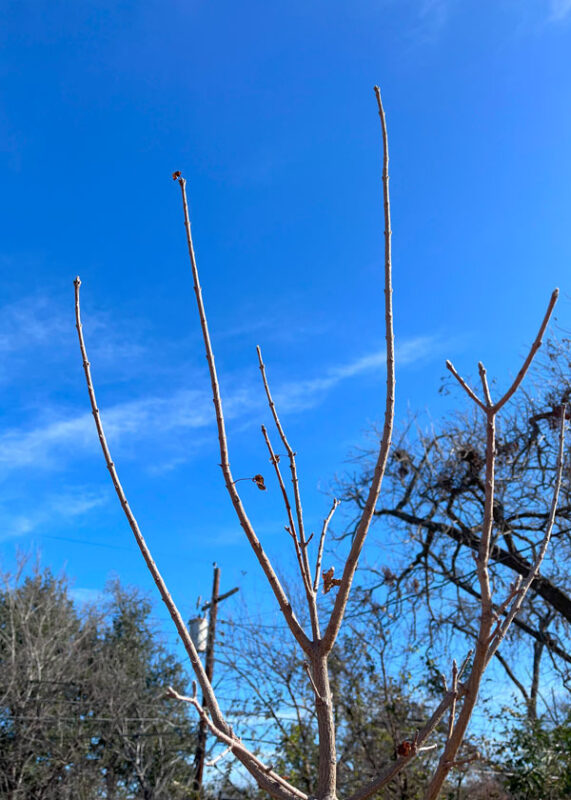
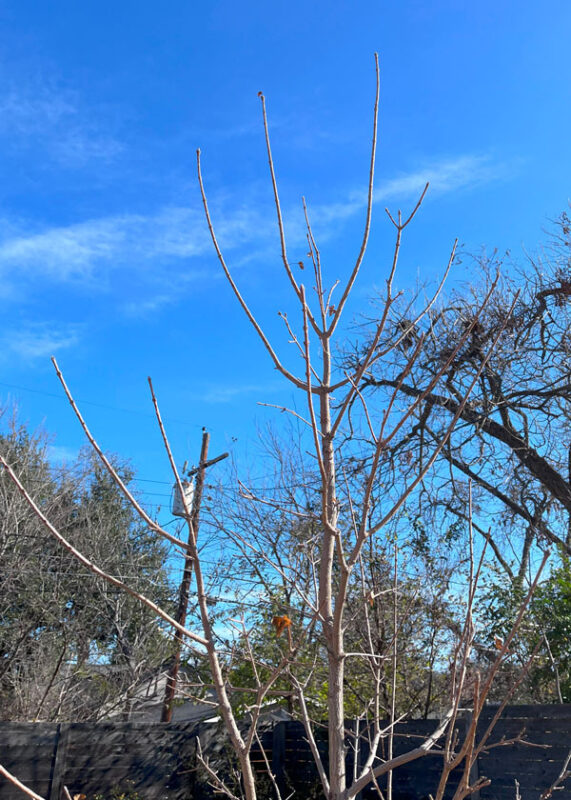
Answer: I was so hoping one of the two photos would show the entire tree. Looking at the two photos of the top of the tree, my vote would be not to prune anything up there. It looks like it’s developing side branches just fine. For the long run, I’m more concerned about the branching that may be coming out down low around the base. If the tree is 8 to 10 ft. tall, you don’t want any branches lower than 4 ft. from the ground. In fact, that may be the final height of the lowest branch, so it may be time to establish the ultimate branching structure. This would be your chance to remove any rubbing limbs or any that head in unwanted directions. I’ve looked at your photos five times. The more distant of the two now has me wondering if that branch coming up from the lower left might be the “weaker of the two emerging leaders” to which you referred?? Perhaps it does need to be headed back by a few inches just to slow it down, but I cannot tell at all from this photo. That’s the best I can offer. I’m sorry. I just can’t see enough.

